An interesting story hit the headlines this week - the attempt by a Spanish pensioner to restore a 19th century Spanish fresco depicting Christ.
The result was a disaster and, according to one newspaper, made Christ look like a monkey. Another commentator thought that he looked like he has just come out of a stag party.
The fresco is apparently not very valuable in money terms. That must be an opinion about its financial status before the disfigurment was revealed.
It has now become a great celebrity.
What to do with it? Leave it as it is or try to restore it again?
Well, I have an idea.
Take it as it now is to a museum of contemporary art and exhibit it along with all those filing cabinets, beach pebbles, etc, whose aim, we are patronisingly told, is to make us think about our relationship to the work of art exhibited.
What better to make one think in these terms than this disfigured fresco?
What is more, given its new celebrity, it is probably worth a lot more than many of the filing cabinets and beach pebbles exhibited at some art galleries.
If I were the director of one of these art galleries, I would snap up this "restored" fresco at once! It would probably be more effective in fulfilling the mission of (as some custodians of art think) of making us think, it will draw large crowds (rather larger than the ones who come to see new filing cabinets in the art gallery) and it will increase the financial status of the gallery.
Well, how about it?
Subscribe to:
Post Comments (Atom)

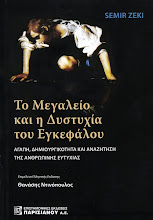
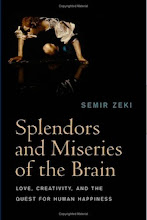
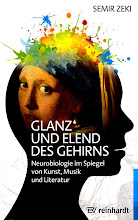
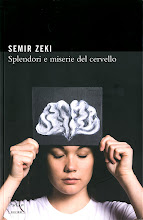



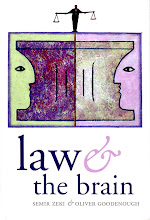
 Contact us
Contact us
5 comments:
Dear Prof. Zeki, I had the pleasure to meet you a couple of years ago in Barcelona ( Conference on Brain and Emotion, Ignacio Morgado) I never lost totally track ( books:-) but just came across your blog. I totally agree with your post: it is the relationship we establish that makes us react. Whenever there is a "difference that makes a difference" we have an emotion, our brain tells us the " how " I am happy to have you somehow back into my visual campus. :-) great post
Hello, and thanks for your comment. It raises this interesting question: why is it so much easier to welcome some items into our "visual campus" than others?
Cheers, SZ
Hi prof. Zeki!
I'm currently doing thesis for MFA (painting) at the Academy of fine arts in Zagreb, Croatia. Topic: "Braining": Don't paint what's there. Paint what's not there.
I've 'accidentally ran into you' this winter on thebeatifulbrain.org and loved you instantly. As a painter I'm interested in connecting art with neuroscience and I'm working on it to visit one of your lectures.
Regarding your post, I must say it gave me a good laugh and I would propose the same: put it in the contemporary art gallery.
The questions 'why is it so much easier to welcome some items into our 'visual campus' than others I reply: Man sees only what he finds familiar. Thus he sees very, very, very little, almost nothing. :)
Thanks, Martina, for your nice comments. Regarding the last sentence of your comment, I suppose that is one reason why Paul Klee once said that "Art makes things visible"!
As to painting what is not there, I wonder whether you saw a previous post of mine on this site, in which I described the pleasures of looking at an empty wall in a Japanese hotel. You can view it at
http://profzeki.blogspot.co.uk/2011/01/empty-walls-and-rich-imagination.html
Regards, SZ
Neither I am an artist nor a painter but still I am interested in these beautiful art forms and paintings. As I love to be the part of such art conventions, art galleries. Just looking for further details on the art forms!!
Post a Comment